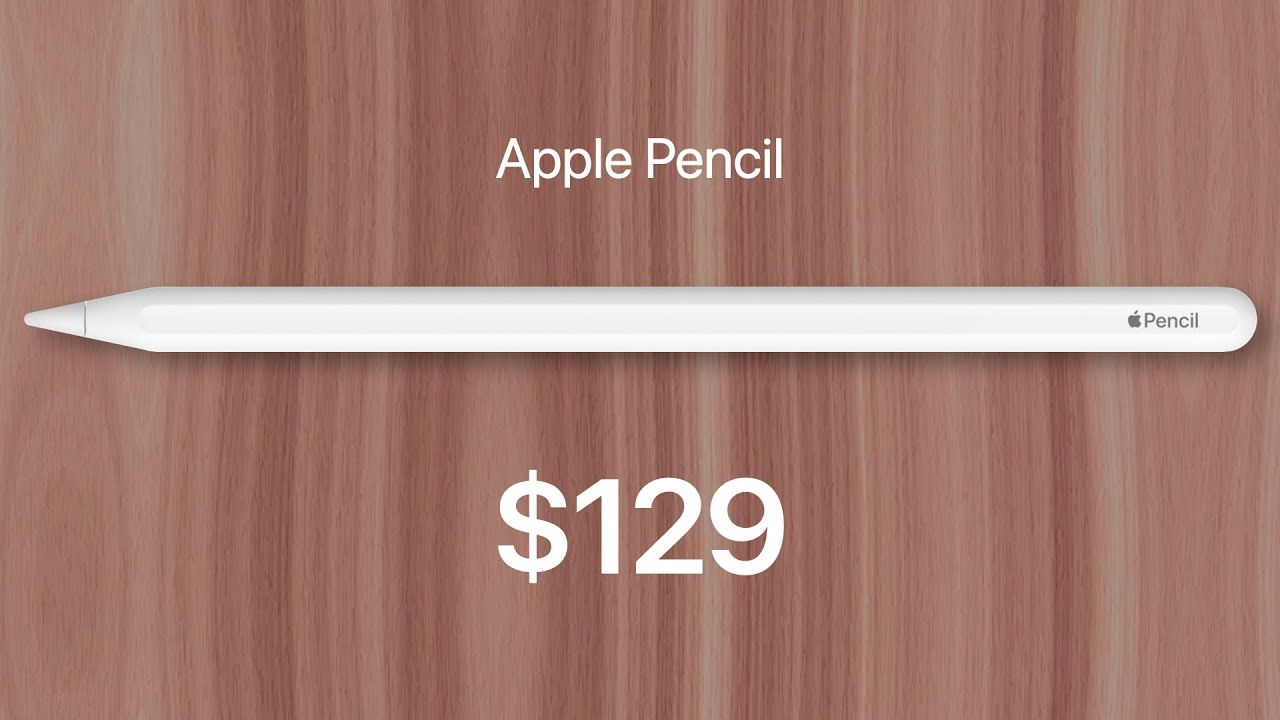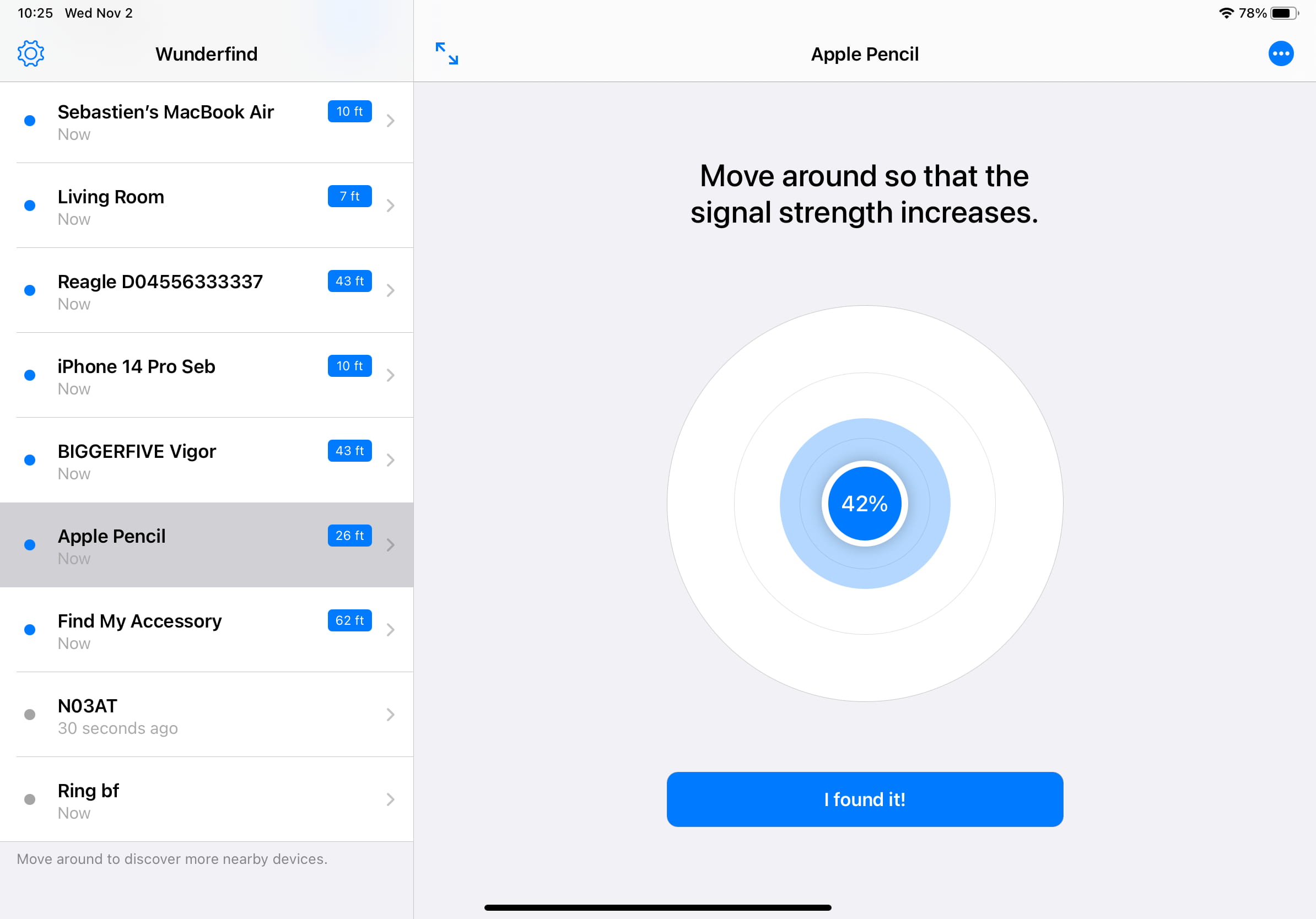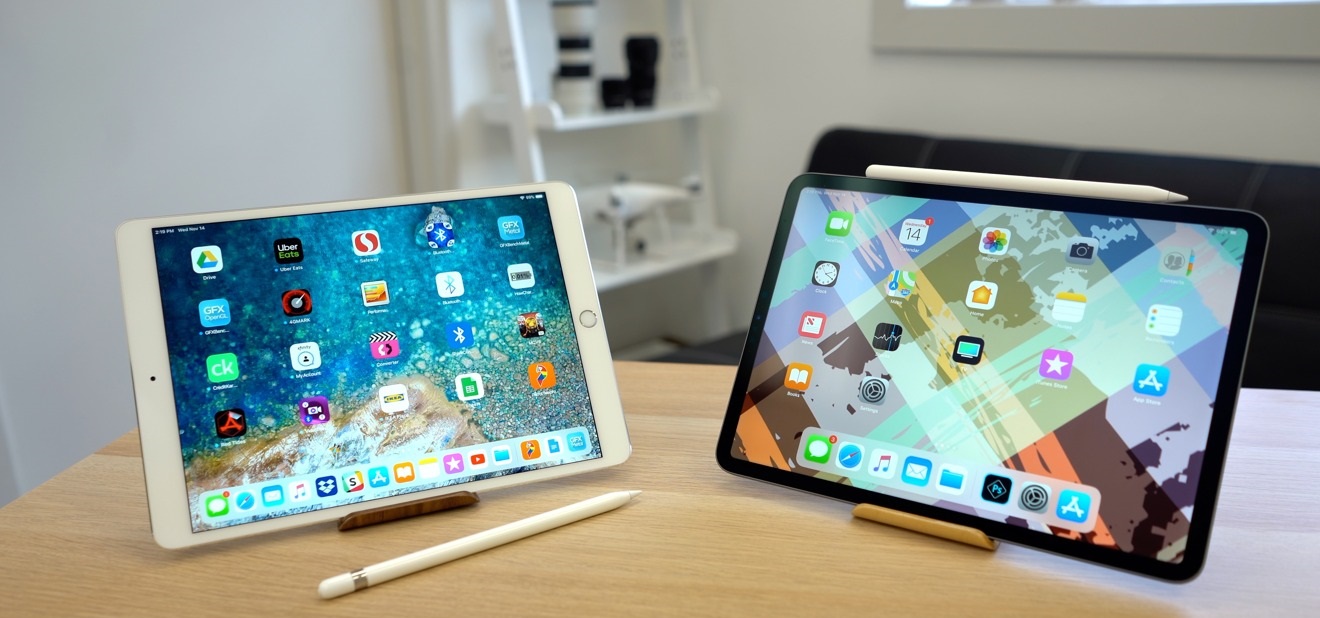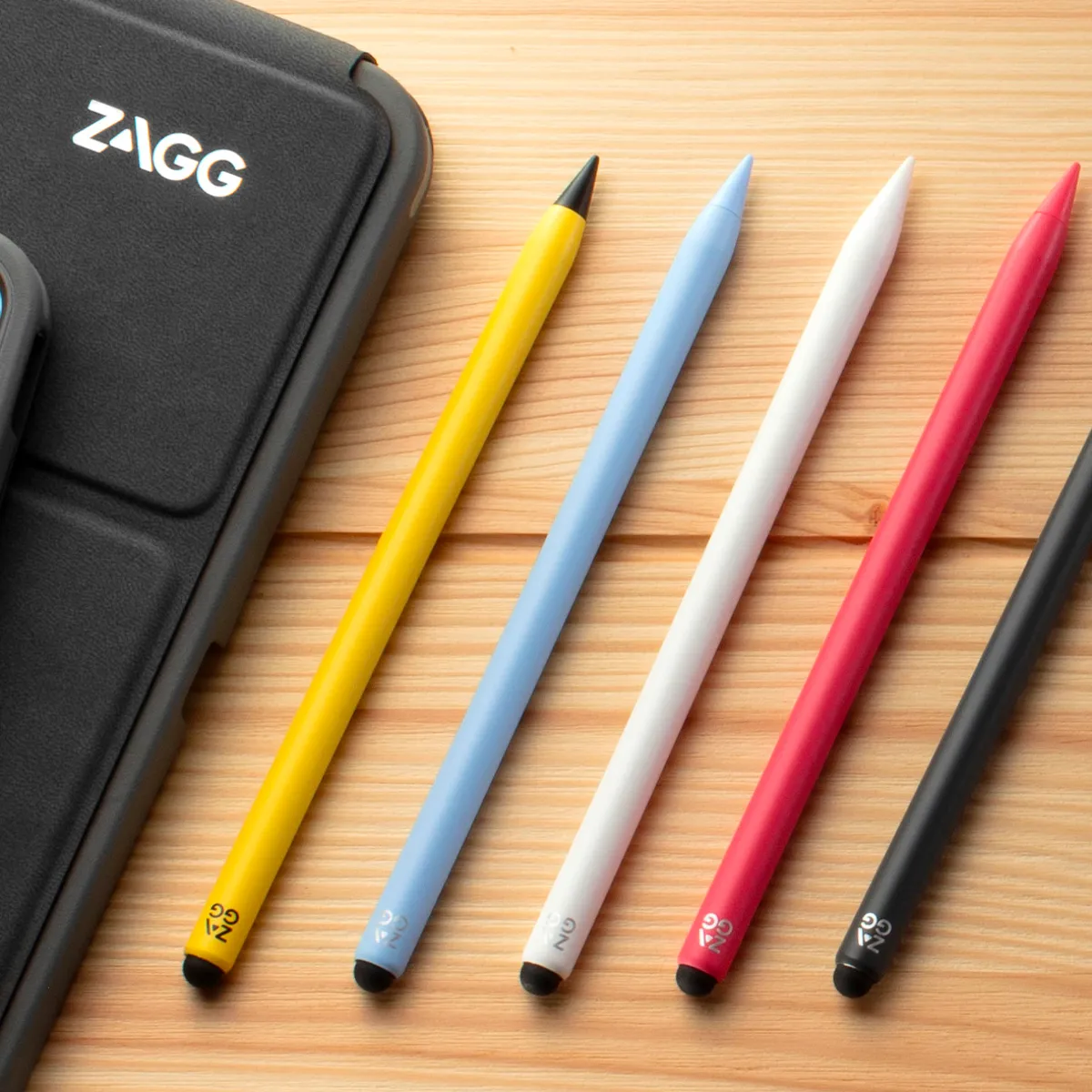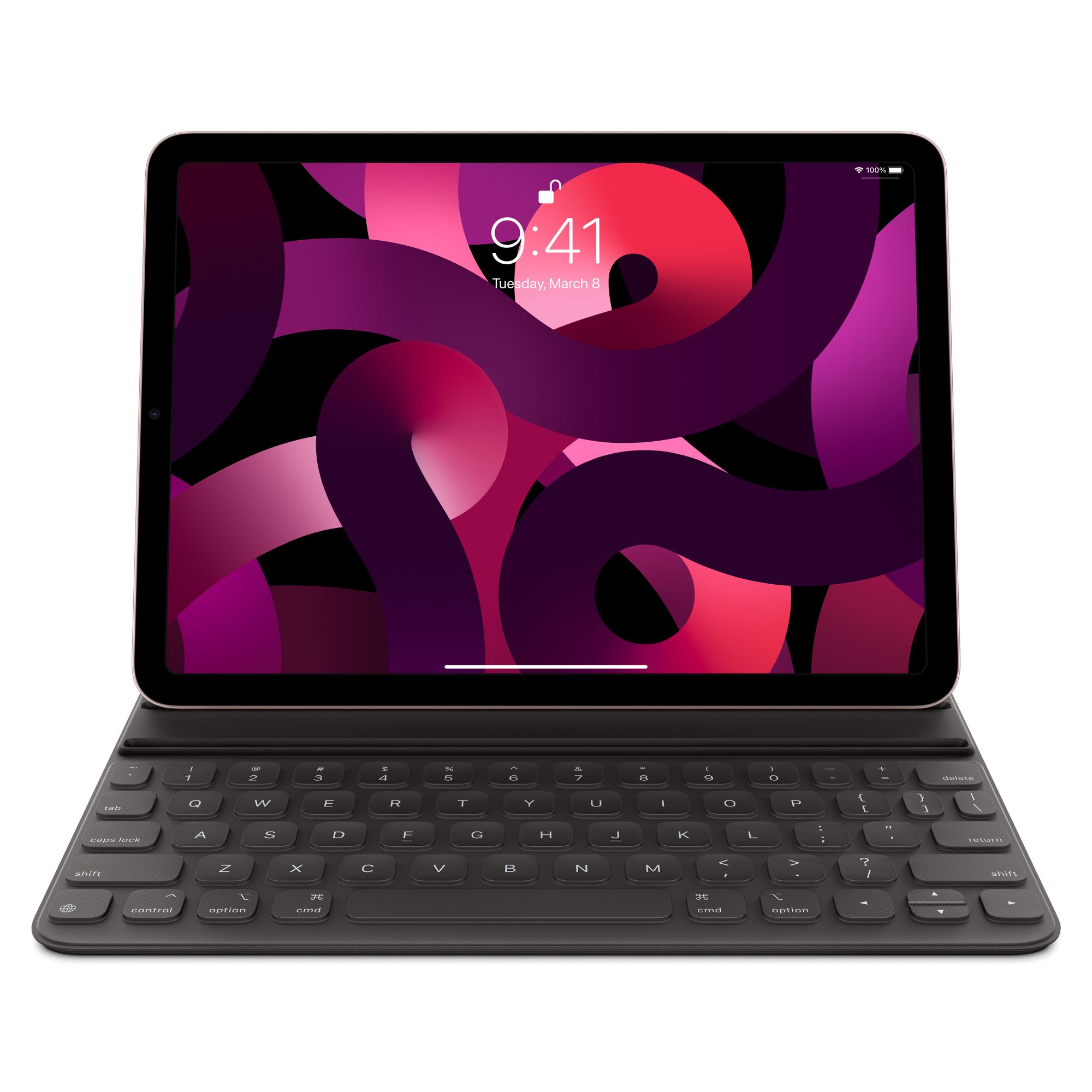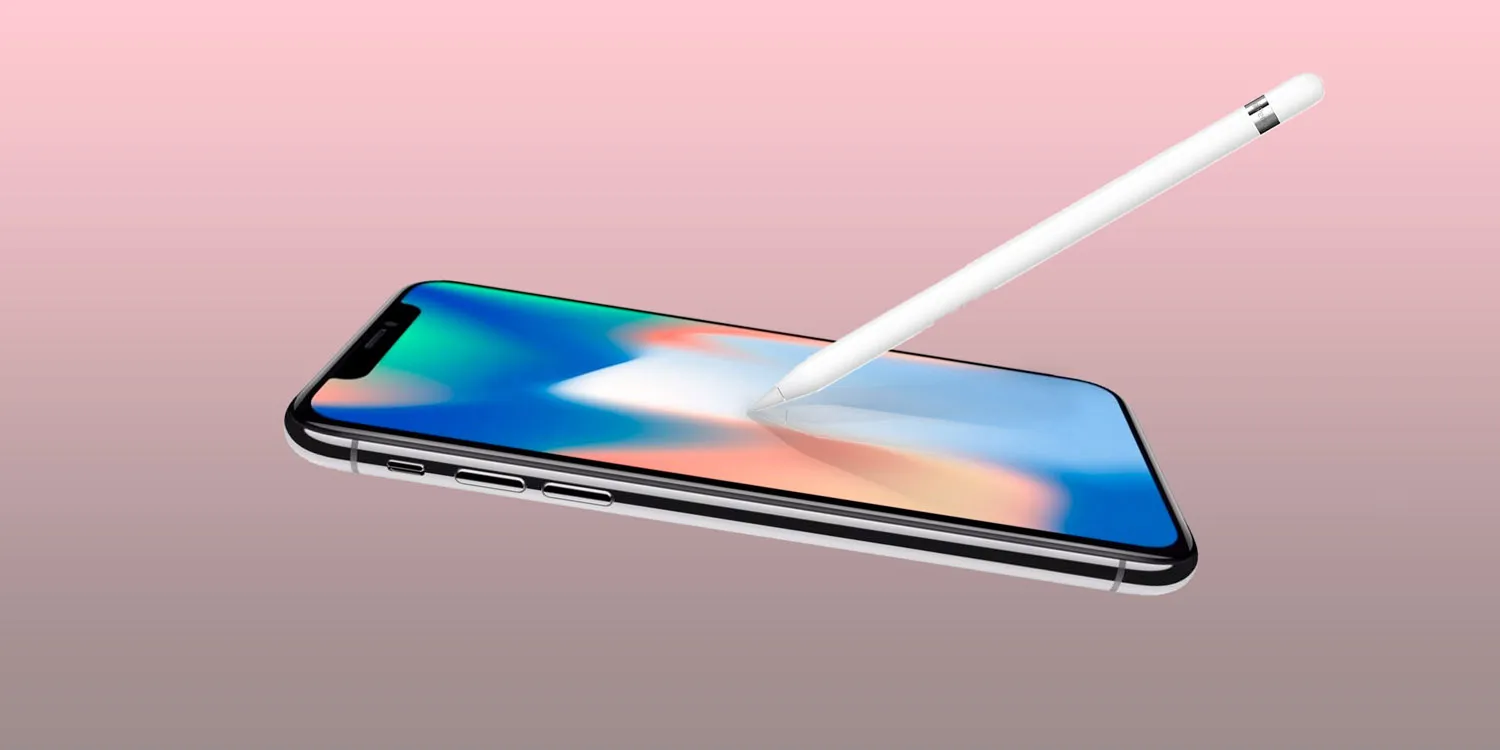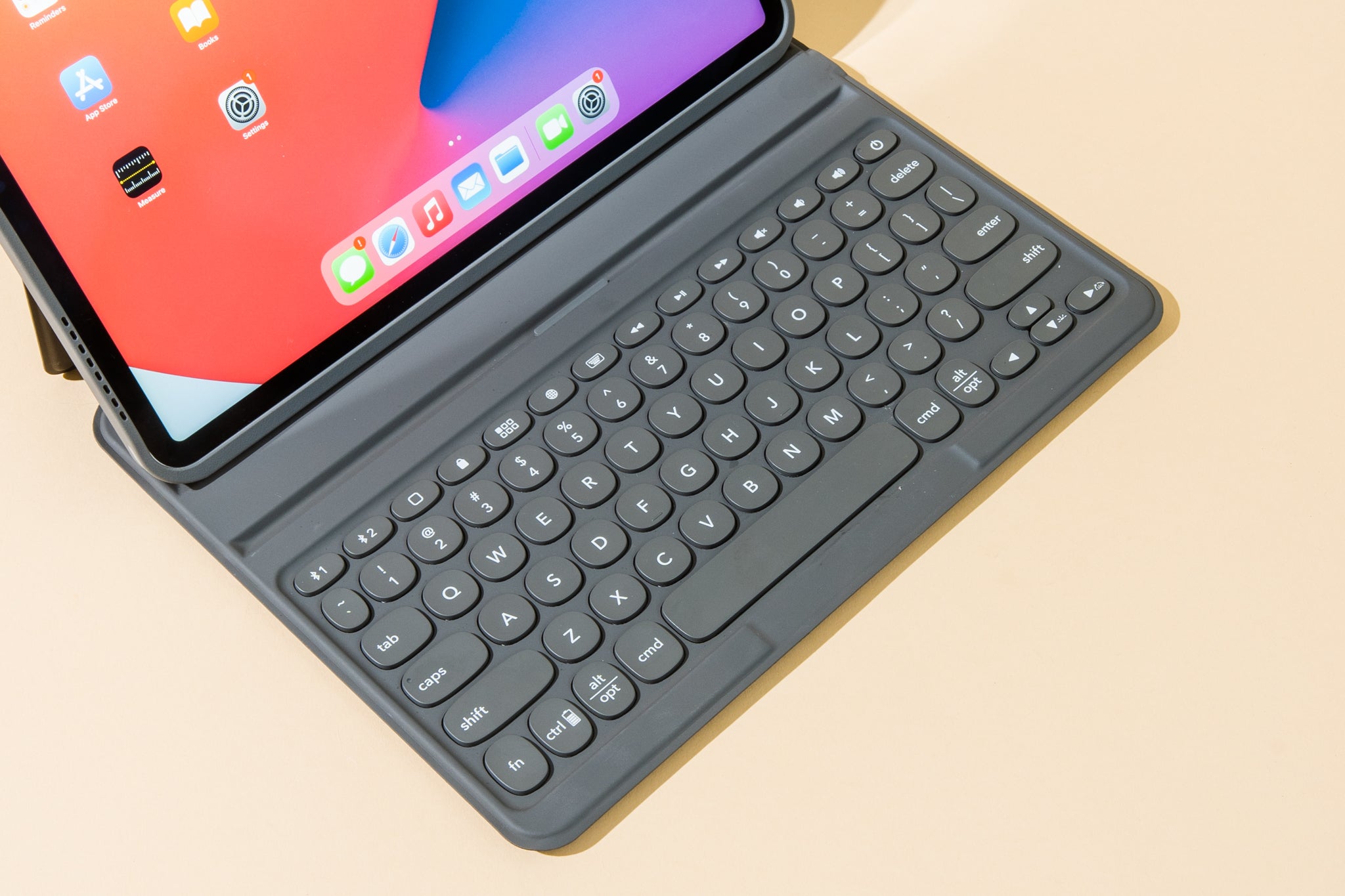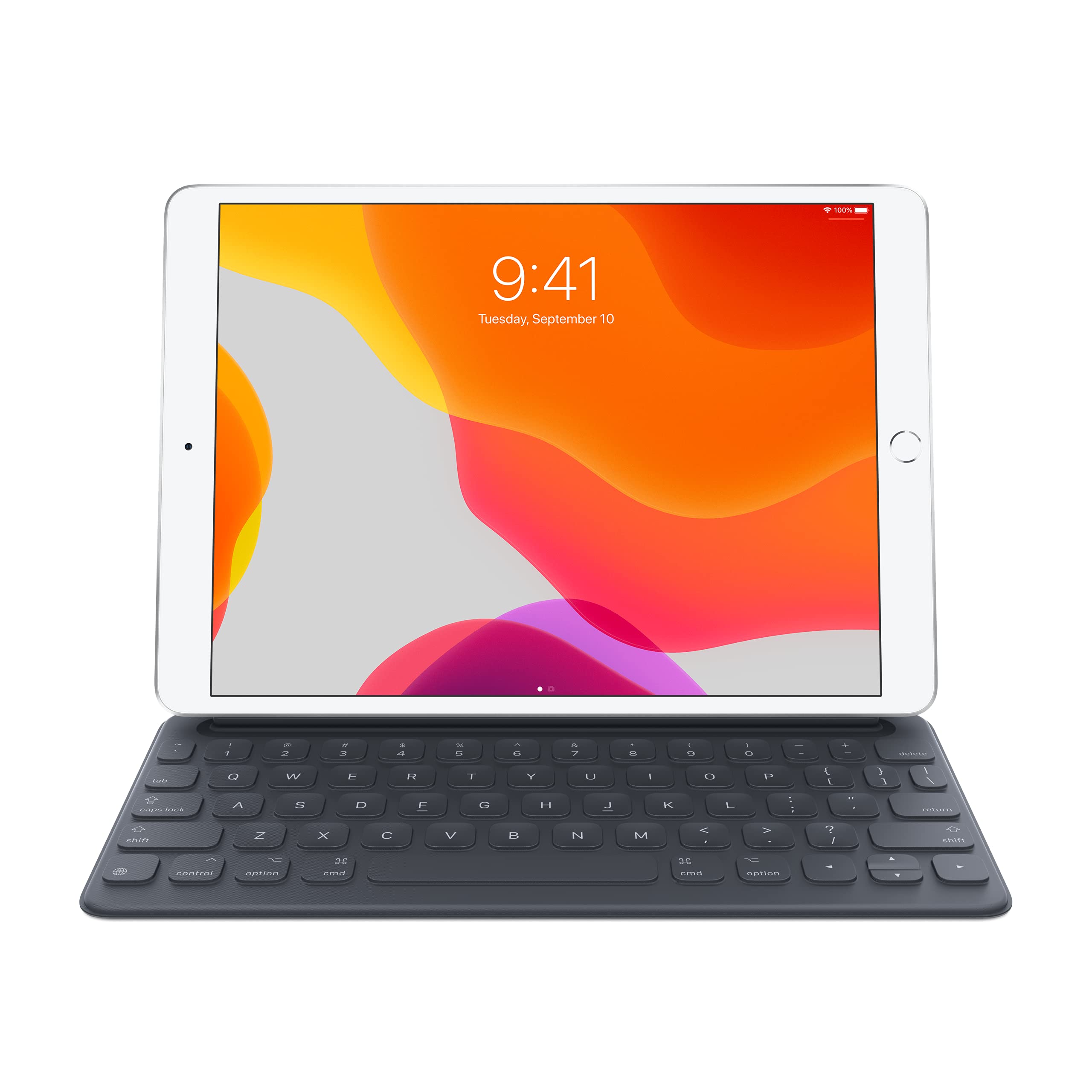Introduction
When it comes to digital drawing and note-taking, the Apple Pencil has quickly become the go-to accessory for many iPad users. Its precision, responsiveness, and seamless integration with Apple devices have elevated the stylus to the top of the market. However, there’s one aspect that often raises eyebrows: its hefty price tag.
The Apple Pencil’s premium price has left many wondering why it is so expensive compared to other stylus options. In this article, we will delve deeper into the reasons behind the Apple Pencil’s high cost, exploring the technology behind it, its advanced features, design and quality, as well as other factors contributing to its price.
By understanding the factors that justify the Apple Pencil’s price point, we can gain a better appreciation for its value and the innovation that went into its development.
So, let’s dive in and uncover the fascinating aspects that make the Apple Pencil a prized accessory for iPad enthusiasts.
The Technology behind Apple Pencil
The Apple Pencil is not just an ordinary stylus; it incorporates cutting-edge technology that sets it apart from other options on the market. At its core, the Apple Pencil utilizes sophisticated hardware and software to deliver an exceptional user experience.
One of the key technologies that make the Apple Pencil stand out is its pressure and tilt sensitivity. With 2,048 levels of pressure sensitivity and the ability to detect the angle at which it’s held, the Apple Pencil allows for precise control and a natural drawing experience. This level of sensitivity enables artists and designers to create detailed artwork with varying line thickness and shading.
Another impressive feature is the palm rejection technology. This technology allows users to rest their hand on the iPad screen while using the Apple Pencil without any interference or accidental marks. This palm rejection capability enhances the overall comfort and usability of the stylus during long drawing or writing sessions.
Furthermore, the Apple Pencil utilizes advanced sensors to accurately track its position and orientation. By combining data from the sensors with the iPad’s powerful processing capabilities, the stylus can provide real-time feedback and deliver an almost lag-free and incredibly responsive experience.
In addition, the Apple Pencil supports seamless wireless charging through the iPad itself. This eliminates the need for awkward charging cables or connectors, ensuring that the stylus is always ready for use. The convenience of this charging method is a testament to the thoughtful design and integration of the Apple Pencil with Apple’s ecosystem.
Overall, the technology behind the Apple Pencil is a result of extensive research and development. The combination of precision, sensitivity, palm rejection, and wireless charging elevates the stylus to a level where it can meet the high demands of professional artists, illustrators, and designers.
Advanced Features and Functionality
One of the reasons why the Apple Pencil commands a higher price compared to other stylus options is its advanced features and functionality. Apple has incorporated several innovative technologies into the stylus to enhance the user experience and provide unparalleled performance.
One of the standout features of the Apple Pencil is its seamless pairing and connectivity with iPad devices. When you connect the Apple Pencil to an iPad, it instantly recognizes and pairs with the device, eliminating the need for complicated setup processes. This seamless integration allows users to start creating, drawing, and writing with minimal delay or hassle.
Furthermore, the Apple Pencil offers exceptional precision and accuracy. It has an impressively low latency rate, which means that there is minimum delay between the strokes made with the stylus and their appearance on the screen. This responsiveness is crucial for artists and designers who rely on precise control and real-time feedback.
Another noteworthy feature is the double-tap functionality introduced in the second-generation Apple Pencil. This feature allows users to customize the stylus to perform specific actions or switch between tools with a simple double-tap motion. This customization enhances efficiency and productivity, as users can quickly access their preferred functions without navigating through menus or toolbars.
In addition, the Apple Pencil supports a variety of drawing and writing techniques. Its pressure sensitivity and tilt recognition enable users to create different line weights and achieve shading effects similar to traditional drawing tools. This versatility gives artists the freedom to unleash their creativity and achieve stunning artwork on their iPads.
Moreover, the Apple Pencil is equipped with advanced palm rejection technology. This feature allows users to comfortably rest their hands on the iPad screen without worrying about unintentional marks or interference. It offers a natural and seamless drawing experience, allowing artists to focus on their artwork without any distractions.
Overall, the advanced features integrated into the Apple Pencil, such as seamless pairing, low latency, customizable double-tap functionality, and palm rejection, contribute to its higher price tag. These features elevate the stylus to a class of its own, catering to the needs of professional artists, designers, and anyone who desires a premium drawing and writing experience.
Quality and Design
Apple is renowned for its commitment to producing high-quality products, and the Apple Pencil is no exception. From its sleek and ergonomic design to the use of premium materials, the stylus exudes a sense of craftsmanship and attention to detail.
The Apple Pencil features a seamless and minimalist design, with a sleek cylindrical shape that feels comfortable to hold. Its slim profile and balanced weight distribution make it easy to maneuver and control, even during extended drawing or writing sessions. In terms of build quality, the Apple Pencil is constructed with durable materials that withstand daily use, ensuring longevity and reliability.
Moreover, the stylus’s tip is constructed with precision and provides just the right amount of friction on the iPad’s screen. This balance allows for smooth strokes and an authentic paper-like feel, enhancing the user’s drawing or writing experience.
Apple’s meticulous attention to detail extends to the charging mechanism of the Apple Pencil as well. The stylus attaches magnetically to the side of the iPad, ensuring a secure connection while also making it readily accessible for charging. This design choice eliminates the need for additional ports or connectors, further simplifying the overall user experience.
Additionally, the Apple Pencil’s design incorporates practical features that enhance usability. For instance, a removable cap at the back of the stylus can be detached to reveal a Lightning connector, enabling direct charging from the iPad in case of emergencies. This convenient feature ensures that the stylus remains functional even if the battery is depleted.
When it comes to quality, Apple maintains strict control over the manufacturing process, ensuring that each Apple Pencil meets their rigorous standards. The company’s dedication to delivering a premium product is evident throughout its design and construction.
Overall, the combination of the Apple Pencil’s sleek and ergonomic design, premium materials, attention to detail, and Apple’s relentless commitment to quality contributes to its higher price compared to other stylus options. By choosing the Apple Pencil, users can be confident in owning a stylus that not only performs exceptionally but also delivers a premium and satisfying user experience.
Apple Branding and Marketing
One factor that plays a significant role in the pricing of the Apple Pencil is Apple’s strong brand reputation and marketing strategies. Apple has positioned itself as a leader in innovation and premium technology, and this brand image influences consumer perception and expectations.
Apple’s reputation for delivering high-quality, innovative products affords them the ability to charge a premium for their accessories, including the Apple Pencil. Consumers are often willing to pay more for a product that aligns with the brand image and is perceived as high-end and top-of-the-line.
The Apple Pencil benefits from the extensive marketing efforts of Apple. Apple invests heavily in advertising campaigns, showcasing the capabilities of the Apple Pencil and positioning it as an essential tool for digital artists, professionals, and creative individuals. By associating the Apple Pencil with creativity, precision, and seamless integration with Apple devices, the company creates a desire among consumers to own this premium stylus.
Apple’s marketing strategy doesn’t just focus on the product itself but also highlights the unique experiences and possibilities that the Apple Pencil offers. Through compelling storytelling, engaging visuals, and showcasing real-world use cases, Apple creates a sense of aspiration and exclusivity around the product.
Moreover, Apple’s retail presence and customer service contribute to the overall perceived value of the Apple Pencil. Apple Stores provide a personalized and immersive shopping experience, where customers can try out the stylus and receive expert advice from Apple’s knowledgeable staff. This hands-on experience helps build trust and confidence in the product, further reinforcing its premium positioning.
Apple’s meticulous attention to detail in terms of packaging and presentation also elevates the perceived value of the Apple Pencil. The stylus is packaged in a sleek and minimalistic box, accompanied by carefully designed product documentation. These elements contribute to the overall premium experience that Apple users have come to expect.
All of these branding and marketing efforts undoubtedly impact the price of the Apple Pencil. The premium positioning, brand reputation, and marketing campaigns contribute to the perception of exclusivity and desirability, which justifies the higher price tag attached to the stylus.
Integration with iOS Devices
One of the key selling points of the Apple Pencil is its seamless integration with iOS devices, specifically the iPad. This tight integration enhances the user experience and functionality of the stylus, making it an invaluable tool for iPad users.
The Apple Pencil utilizes Bluetooth technology to establish a wireless connection with the iPad, enabling instant pairing and a reliable connection. This wireless connection ensures that the stylus is always ready for use without the need for complicated setup processes or physical connectors.
Once connected to an iPad, the Apple Pencil unlocks a range of features and capabilities that are designed specifically for drawing, note-taking, and creative tasks. For example, when using drawing apps, the stylus can detect varying levels of pressure, tilt, and stroke speed, allowing for precise control and natural drawing techniques.
The iPad’s display, combined with the Apple Pencil, offers an immersive drawing and writing experience. The stylus’s tip registers contact with the screen accurately, providing a high level of responsiveness and reducing any perceivable lag. This seamless interaction between the Apple Pencil and the iPad’s touch interface allows for a fluid and intuitive workflow.
Furthermore, the Apple Pencil supports additional features within certain apps, thanks to Apple’s iOS software integration. These features include the ability to annotate documents, highlight text, and navigate menus or toolbars with ease. These functionalities make the stylus an indispensable tool for professionals, educators, and individuals who rely on their iPad for productivity and creativity.
Additionally, the iPad’s palm rejection technology, combined with the Apple Pencil, ensures a comfortable and natural writing or drawing experience. Users can rest their hands on the iPad’s screen without fear of accidental marks or interference. This palm rejection capability further enhances the usability and ergonomics of the stylus.
Overall, the seamless integration of the Apple Pencil with iOS devices, specifically the iPad, sets it apart from other stylus options. The combination of wireless connectivity, precise touch detection, advanced features within apps, and palm rejection technology provides users with a seamless and immersive digital writing and drawing experience.
Research and Development Costs
The development of the Apple Pencil involved extensive research and development (R&D) efforts to create an exceptional stylus that met Apple’s high standards. These R&D costs, along with the investment in cutting-edge technology, contribute to the pricing of the Apple Pencil.
Apple’s R&D process involves a significant investment in resources, talent, and time. The development of the Apple Pencil required engineers, designers, and software developers to work collaboratively to design and refine the stylus’s features, functionality, and integration with iOS devices.
During the R&D phase, Apple would have conducted numerous tests and prototypes to fine-tune the stylus’s performance, pressure sensitivity, palm rejection capabilities, and wireless connectivity. This iterative process ensures that the final product delivers a seamless and superior user experience.
Furthermore, Apple’s commitment to innovation is evident in the patented technology incorporated into the Apple Pencil. Developing and protecting these innovations involve significant investment in patent filings and legal expenses.
Apple’s continuous investment in R&D is a driving force behind the company’s ability to push the boundaries of technology. The research and development costs associated with creating the Apple Pencil are reflective of Apple’s commitment to delivering cutting-edge products that excel in quality and performance.
It’s important to note that these R&D costs are not directly visible in the physical product but are factored into the overall pricing strategy of Apple. The Apple Pencil’s price reflects not only the cost of production but also the significant investment in research and development required to bring the stylus to market.
By investing in research and development, Apple ensures that its products, including the Apple Pencil, remain at the forefront of technology and continue to meet the demands of professionals and creative individuals who rely on their devices for productivity and creativity.
Limited Compatibility
One factor that can impact the perceived value and pricing of the Apple Pencil is its limited compatibility with iOS devices. Currently, the Apple Pencil is primarily designed to work with certain iPad models, which can be a limitation for users who don’t own a compatible device.
The first-generation Apple Pencil is compatible with select iPad Pro models and the sixth-generation iPad, while the second-generation Apple Pencil is compatible with the third-generation iPad Pro models. This limited compatibility means that users with older iPad models or other iOS devices, such as iPhones, cannot take advantage of the Apple Pencil’s features and functionality.
While the limited compatibility may be disappointing for some users, it can also be seen as a strategic move by Apple. By exclusively designing the Apple Pencil for specific iPad models, Apple creates a sense of exclusivity and differentiation. It encourages users to upgrade their devices to enjoy the full functionality of the stylus, further reinforcing customer loyalty and revenue generation for Apple.
However, it’s worth noting that Apple’s focus on compatibility extends beyond just the hardware. The integration of the Apple Pencil with iOS software ensures a seamless user experience and enhances productivity and creativity. Apple has developed and optimized a range of apps, like Notes and Procreate, to fully leverage the capabilities of the stylus. This tight integration enhances the user experience for those with compatible devices.
While the limited compatibility may be a drawback for some, it is important to acknowledge that the Apple Pencil’s performance and features are optimized for the specific iPad models it is designed to work with. This ensures that users experience the full potential of the stylus without any compromises.
Overall, the limited compatibility of the Apple Pencil with select iPad models can impact its perceived value and pricing. However, the focus on compatibility ensures that users with compatible devices can enjoy a seamless and integrated experience, maximizing the benefits of the stylus.
The Cost of Innovation
Innovation is at the core of Apple’s philosophy, and the Apple Pencil is a prime example of the company’s commitment to pushing the boundaries of technology. However, innovation comes at a cost, and the investment in research, development, and cutting-edge technology is reflected in the pricing of the Apple Pencil.
Developing a stylus that offers the level of precision, sensitivity, and integration found in the Apple Pencil requires substantial investments in both hardware and software. Apple’s engineers and designers work tirelessly to innovate and create a stylus that delivers an exceptional user experience. This level of innovation involves extensive research, prototyping, and refinement to achieve the desired functionality and performance.
The use of advanced technology in the Apple Pencil, such as pressure and tilt sensitivity, wireless connectivity, and palm rejection, requires the inclusion of high-quality components and sensors. These components contribute to the overall production cost of the stylus, ultimately impacting its price.
Furthermore, Apple’s commitment to sustainability and environmental responsibility can also contribute to the cost of innovation. The company invests in eco-friendly manufacturing processes, materials, and recycling initiatives to reduce its environmental footprint. These sustainable practices often come with additional costs that are factored into the pricing of Apple products, including the Apple Pencil.
Moreover, Apple consistently updates and improves its technology to meet the evolving needs of its users. The ongoing investment in research and development to enhance the capabilities of the Apple Pencil, as well as the regular software updates and compatibility improvements, necessitate a continuous stream of resources and investment, which is reflected in the product’s pricing.
By acknowledging the cost of innovation, users can gain a deeper appreciation for the technological advancements and the amount of effort that goes into creating a stylus like the Apple Pencil. While the price may be higher compared to other stylus options, it reflects the value and innovation that the Apple Pencil brings to the table.
In essence, the cost of innovation is a fundamental consideration in the pricing of the Apple Pencil. It represents the investment in research, development, advanced technology, sustainability, and ongoing improvements to deliver a stylus that meets the high standards set by Apple.
Comparisons with Other Stylus Options
When looking at the pricing of the Apple Pencil, it’s essential to compare it with other stylus options available in the market. While the Apple Pencil may have a higher price tag, it’s crucial to consider the unique features, performance, and compatibility it offers in comparison to other styluses.
There are several third-party stylus options available that are compatible with a wide range of devices beyond just iPads. These styluses often come at a lower price point, making them accessible to a broader audience. However, they may not offer the same level of precision, sensitivity, or seamless integration with iOS devices that the Apple Pencil provides.
One significant advantage of the Apple Pencil is its palm rejection technology, allowing users to rest their hands on the screen comfortably. This feature is not always present or as effective in other stylus options, leading to potential frustration when accidental marks occur while drawing or writing.
Moreover, the pressure sensitivity and tilt recognition of the Apple Pencil set it apart from many other stylus options. These features enable artists and designers to achieve finer control and create more nuanced strokes and shading. Third-party stylus options may have limited or less accurate pressure sensitivity, making the drawing experience less precise and expressive.
The seamless integration of the Apple Pencil with iOS devices, especially iPads, is also a significant differentiator. The Apple Pencil has been specifically designed to work in harmony with compatible devices, optimizing performance and functionality. While third-party styluses may offer compatibility with multiple devices, they may not offer the same level of precision, responsiveness, or software integration as the Apple Pencil.
It’s also worth considering the durability and build quality when comparing the Apple Pencil to other stylus options. Apple’s meticulous attention to detail and strict quality control ensure that the Apple Pencil is constructed with premium materials that withstand daily use. This durability and longevity may not be guaranteed with third-party stylus options.
Ultimately, the decision between the Apple Pencil and other stylus options depends on individual needs and priorities. Users who place a high value on precision, seamless integration, and advanced features may find the Apple Pencil worth the investment. On the other hand, those seeking more affordable options with broader compatibility may opt for third-party stylus choices.
By considering the unique features, performance, compatibility, and build quality of the Apple Pencil in comparison to other stylus options, users can make an informed decision based on their specific requirements and budget.
Conclusion
The Apple Pencil may come with a higher price tag compared to other stylus options, but it offers a combination of advanced technology, seamless integration, and superior performance that justifies its cost. The precision, sensitivity, and palm rejection technology of the Apple Pencil provide a natural drawing and writing experience that meets the demands of professional artists, designers, and creative individuals.
The Apple Pencil’s seamless integration with iOS devices, specifically iPads, unlocks a range of features and capabilities optimized for creativity and productivity. The tight integration with Apple’s ecosystem ensures a smooth user experience and sets it apart from other stylus options on the market.
In addition to its functional advantages, the Apple Pencil boasts a sleek design, premium build quality, and the backing of Apple’s renowned brand. These factors contribute to the stylus’s perceived value and desirability among consumers.
While the cost of the Apple Pencil may be higher compared to other stylus options, it’s important to consider the investment in research and development, cutting-edge technology, and ecosystem integration that justify its price. The Apple Pencil represents a dedication to innovation and a commitment to delivering a premium stylus that meets the demands of creative professionals.
Ultimately, the decision to invest in the Apple Pencil or explore other stylus options depends on individual needs, preferences, and budget. However, for those seeking a high-quality, exceptionally performing stylus that seamlessly integrates with iOS devices, the Apple Pencil remains a top choice.
With its advanced features, precise touch recognition, seamless integration, and commitment to innovation, the Apple Pencil continues to be at the forefront of the stylus market, setting the standard for digital creativity and usability.







